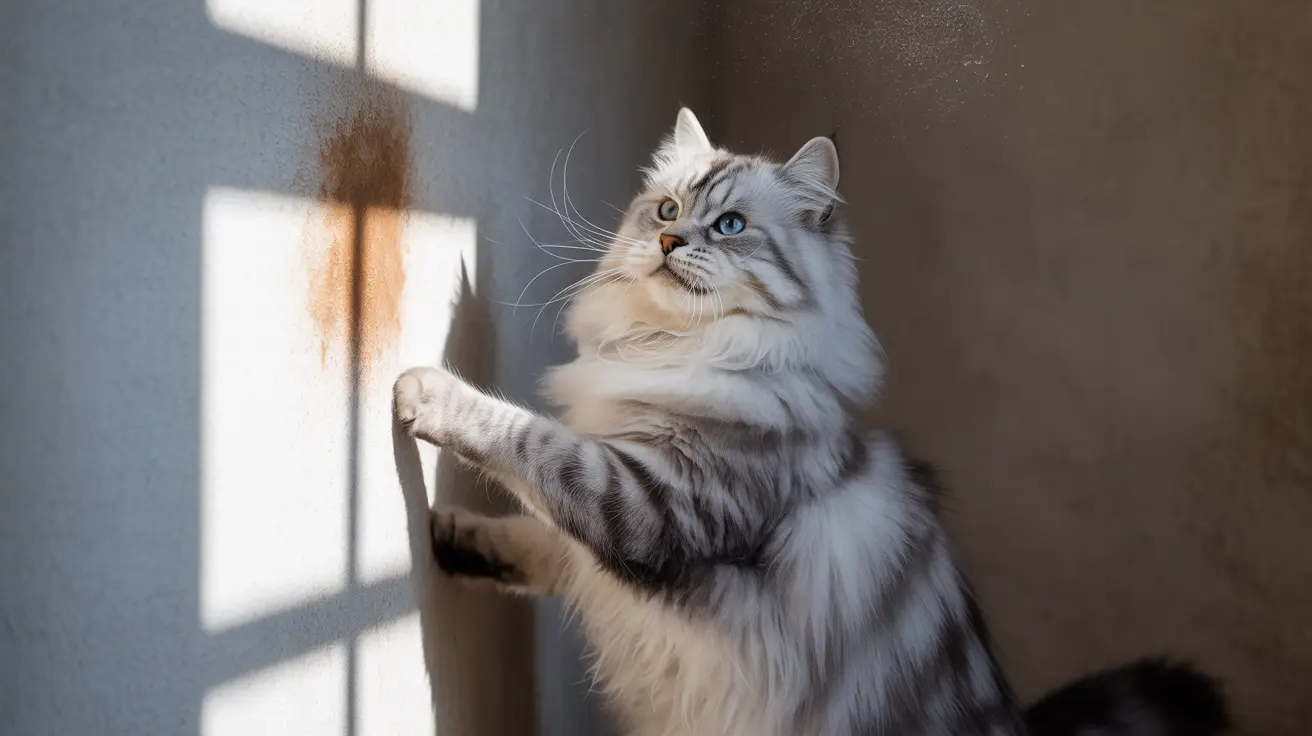For cat owners, discovering urine outside the litter box can be concerning. However, there's a crucial distinction between cat spraying and regular urination that every pet parent needs to understand. This comprehensive guide will help you identify the difference between these behaviors and learn how to address each situation effectively.
Understanding Cat Spraying vs Regular Urination
Cat spraying and regular urination are two distinct behaviors that serve different purposes. While both involve the release of urine, the motivations, postures, and locations typically differ significantly.
What is Cat Spraying?
Spraying is a marking behavior where cats release small amounts of concentrated urine on vertical surfaces. When spraying, cats stand upright with their tail quivering and may perform a treading motion with their back feet. This behavior is primarily communicative, serving as a way to mark territory or signal reproductive availability.
Normal Cat Urination Behavior
Regular urination involves a cat squatting to empty their bladder, typically in their litter box or on horizontal surfaces. This is a natural bodily function rather than a marking behavior. Cats usually try to cover their urine afterward, which doesn't occur with spraying.
Key Differences in Location and Posture
The most noticeable differences between spraying and urination lie in where and how cats perform these behaviors:
- Spraying targets vertical surfaces like walls, doors, and furniture
- Regular urination occurs on horizontal surfaces
- Spraying involves an upright stance with a quivering tail
- Normal urination involves a squatting position
- Spray marks are usually smaller than urination puddles
Common Causes of Cat Spraying
Several factors can trigger spraying behavior in cats:
- Territorial marking, especially in multi-cat households
- Stress or anxiety from environmental changes
- Response to outdoor cats visible through windows
- Mating behavior in unaltered cats
- Social conflict with other pets
Medical vs Behavioral Issues
While spraying is typically behavioral, inappropriate urination often signals medical concerns. Any sudden changes in bathroom habits warrant a veterinary examination to rule out:
- Urinary tract infections
- Kidney disease
- Diabetes
- Arthritis affecting litter box access
- Bladder stones or crystals
Prevention and Solutions
To address both spraying and inappropriate urination:
- Spay or neuter cats early
- Maintain clean litter boxes in quiet locations
- Use enzymatic cleaners on marked areas
- Install feline pheromone diffusers
- Create a stress-free environment
- Provide multiple resources in multi-cat homes
Frequently Asked Questions
What are the key differences between cat spraying and peeing outside the litter box?
Cat spraying involves marking vertical surfaces with small amounts of urine while standing upright. Regular urination occurs on horizontal surfaces with the cat in a squatting position and produces larger amounts of urine.
How can I tell if my cat is spraying to mark territory or urinating due to a medical issue?
Spraying typically involves vertical surfaces and an upright posture with a quivering tail. If your cat is squatting to urinate outside the litter box, especially frequently, it's more likely a medical issue requiring veterinary attention.
Why does my cat spray on vertical surfaces but pee on the floor or bed?
Spraying on vertical surfaces is a marking behavior used for communication, while urinating on horizontal surfaces like floors or beds usually indicates either a medical issue or litter box aversion.
Can neutered or spayed cats still spray urine, and why do they do it?
Yes, though less commonly. About 10% of neutered males and 5% of spayed females may still spray, usually due to stress, territorial issues, or anxiety.
What steps can I take to stop my cat from spraying inside my home?
Address potential stressors, maintain a clean environment, use feline pheromone products, ensure adequate resources in multi-cat homes, and consult with your veterinarian to rule out medical issues.
Conclusion
Understanding the difference between cat spraying and urination is crucial for addressing these behaviors effectively. While spraying is typically a territorial or communication behavior, inappropriate urination often signals medical or environmental concerns. Always consult with your veterinarian when new bathroom behaviors emerge to ensure your cat receives appropriate care and treatment.






